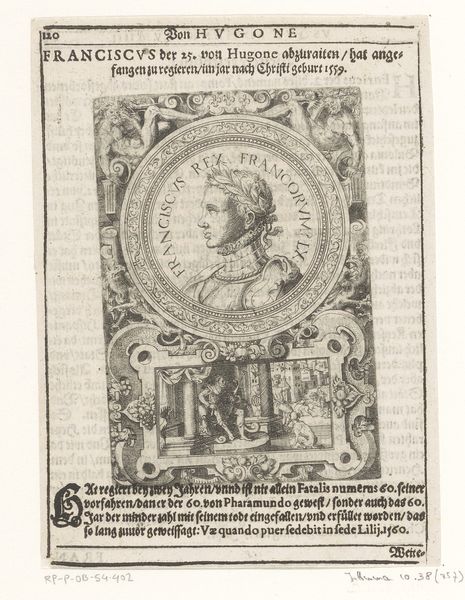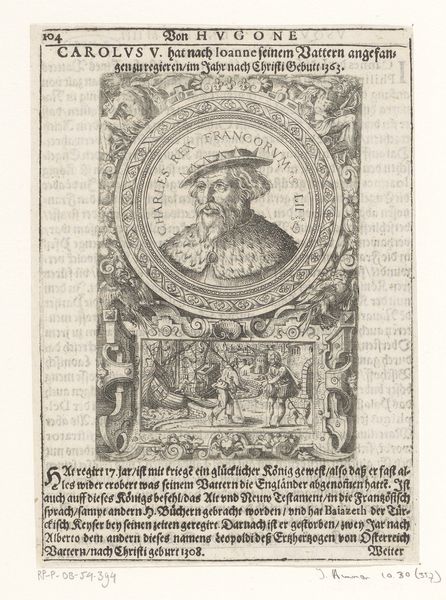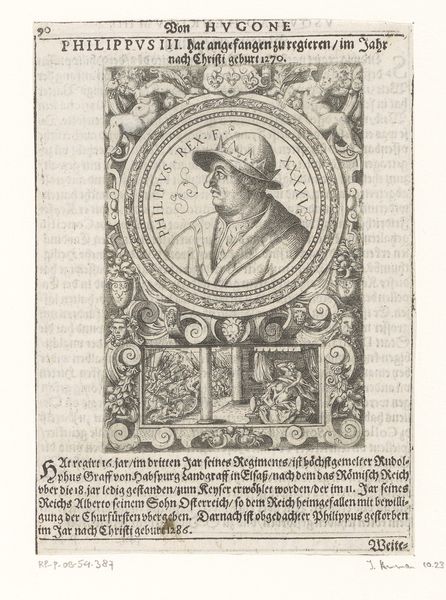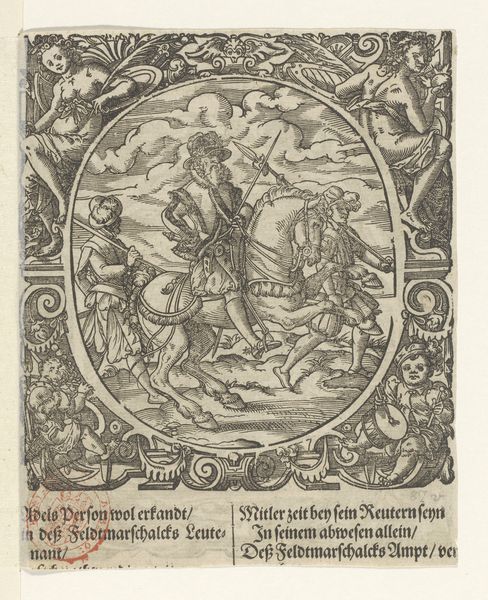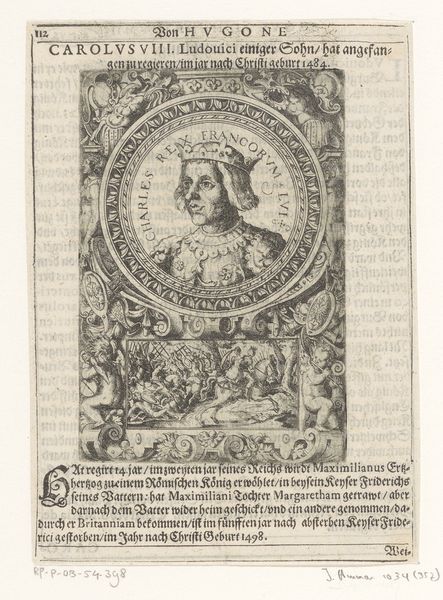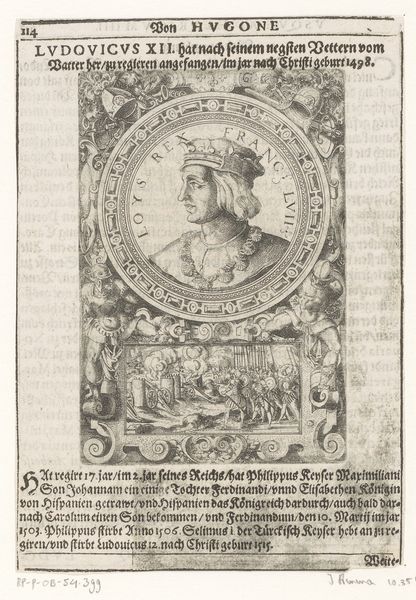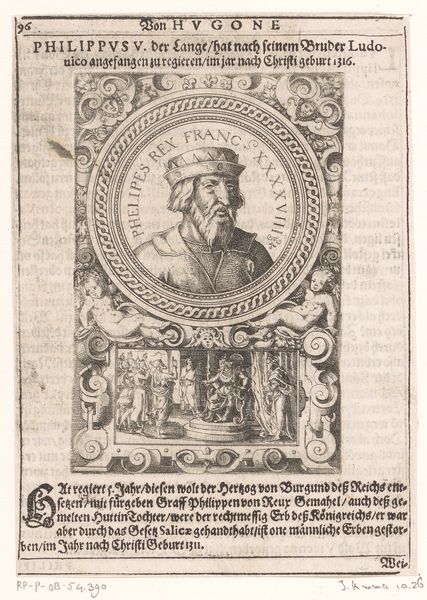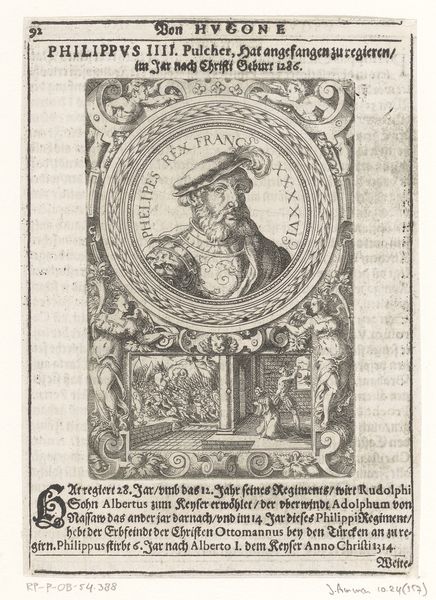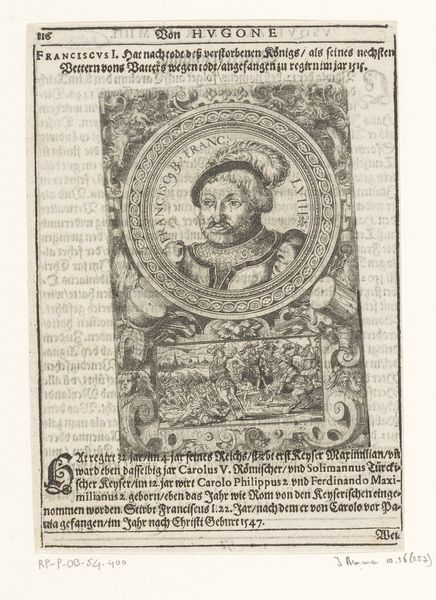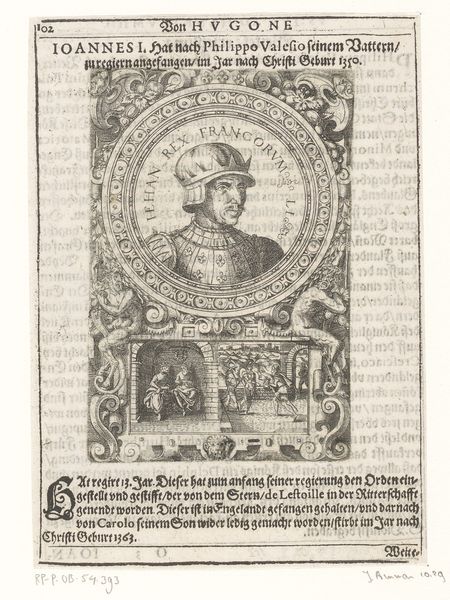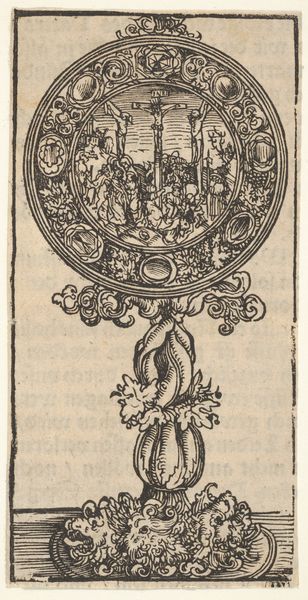
print, engraving
#
portrait
# print
#
11_renaissance
#
line
#
northern-renaissance
#
engraving
Dimensions: height 118 mm, width 78 mm
Copyright: Rijks Museum: Open Domain
Curator: I’m struck by the stillness, the almost austere formality of this portrait. It feels so…contained. Editor: Indeed. What you're perceiving is partly the power of printmaking during the Renaissance. This is Jost Amman’s engraving, "Portret van Filips II, koning van Frankrijk," created around 1598. The engraving allows for meticulous detail, while the style is what we recognize as typical of the Northern Renaissance, embracing precision but also complex symbolism. Curator: The framing definitely adds to that. The portrait in the center medallion, then this… what looks like a little narrative scene beneath it? The king in full armor, regal, surrounded by swirling decoration and that scene… it’s all a bit much, almost chaotic despite the rigid lines. What story is Amman trying to tell us here? Editor: He's situating Philip II within a particular lineage. Note how the armor alludes to his power, the inscription that wraps the portrait proclaims his status, and how the scene below appears to illustrate his place in history and also in Austrian history. Curator: So it’s not just a portrait, it’s a piece of political propaganda. In miniature! I wonder who the intended audience was. Because unless you had a magnifying glass, a lot of those details would be lost. It also makes me think about how carefully constructed royal image has always been. This piece must have had so much influence over Philip II and the rest of the political landscape at that time. Editor: Exactly. It was for distribution, for cementing his legacy within a very specific understanding of power. Note the detail put into not just Philip II’s appearance, but into weaving the text itself with the visual details. Curator: It really makes you consider how even simple engravings, especially those made with this style, worked towards carefully planned narrative, how power, gender, class, war all these things were influenced by single prints. What an amazing glimpse of history! Editor: I agree. It prompts us to reflect on the very real impact artistic representation has and had, the conscious decisions involved in constructing our narratives, even through something as simple as the choice to portray someone in a helmet.
Comments
No comments
Be the first to comment and join the conversation on the ultimate creative platform.

